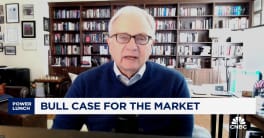The numbers say piggybacks, not by a large margin, at least at the present
time, but still enough difference to make the idea of a blended situation appealing.
Higher interest rates could tilt things in favor of PMI as could the enactment
of proposed regulations that will allow PMI premiums to be deductible in the
same manner as mortgage interest rates.
We looked at two scenarios based on current conditions. Our
first example is the purchase of a $200,000 house with a 10
percent down payment and a mortgage of $180,000 at 5.5 percent. The monthly
payment on the mortgage would be $1,022 (principal and interest) and the PMI
premium based on information from mtgprofessor.com, would be $78.00 (at 0.52
of the mortgage loan) for a total payment of $1,100.
The second scenario is based on the same purchase, but this time using a piggyback loan to supplement the borrower's down payment. Under this scenario, the first mortgage will be reduced to $160,000 (80 percent LTV), there will be no PMI required, and the piggyback second mortgage will be in the amount of $20,000 at 8 percent. The first mortgage payment will be 908.00 and the payment on the second, a 15 year loan, will be $191.00, $133 of which is tax deductible interest. The total payment will thus be $1,099 - $1 less than the combined first mortgage payment and PMI premium in the first scenario. So, at this point we have cash savings of $1 per month plus whatever the tax advantage is from the deductibility of second mortgage interest; an advantage that, should the above referenced legislation pass Congress, might disappear.
At the end of five years the borrower in Scenario One will have accrued $13,571 in equity payments (assuming no appreciation in house value) and will have a first mortgage balance of $166,429 for total equity of $33,571. Note that this is not enough to allow the borrower to get rid of the private mortgage insurance. The borrower in scenario two will owe $163.689; $15,753 on the second mortgage and $147,936 on the first for total equity of $36,311. Score one for piggy backs.
During these five years, PMI payments will have totaled $4,680, not a cent of which has contributed to the borrower's financial well being or sense of security, and at this point those payments have returned no tax benefits.
Some private mortgage insurance companies have recently been emphasizing the risk of piggyback mortgages. That may be true from the lenders' standpoint but probably not from the borrowers. As shown above, the difference in payment between carrying a first and PMI or a first and a piggyback second is, with current interest rates, usually negligible. If a borrower can afford one, he can probably afford the other.
Lenders have the assurance of extra collateral in the case of a piggy back which offsets, at least in part, the security of PMI. This extra security, however, may disappear in a declining market, leaving the lender with exposure in the case of a foreclosure. A lender will probably view PMI as providing a greater chance of full recovery, especially in a declining market. From a borrower's perspective, a foreclosure is a foreclosure; PMI, piggyback, either way a foreclosure will cost them their home and their credit rating.
As a risk factor, the piggy back presents the most exposure to the second mortgagee which will probably see its collateral and any chance of recovery wiped out in a foreclosure. Yet these lenders seem very anxious to assume this risk.
As stated earlier, if you are in an area of rapidly increasing home prices then that also must be factored in. Will you be able to document your home value and ditch PMI in a few years? If so that may be a better solution than a second mortgage that will stay with you for ten or 15 years. Remember, you can't count on refinancing the first and second mortgages as your equity increases; rising interest rates may eliminate that possibility.
If you are confronted with the decision between piggyback and PMI you should
evaluate your choices carefully. Talk to your loan officer about your options.
Run the numbers on each and every option. Ask yourself how long you will stay
in the house; if the combined first and second mortgage payments or the first
mortgage payment plus PMI premiums are manageable under your current financial
situation (just because your loan officer says you can afford them doesn't
mean you really can), and how much wiggle room you have should your financial
situation suddenly change. Finally, how much real difference does the tax
deductibility of a second mortgage make to your bottom line?







